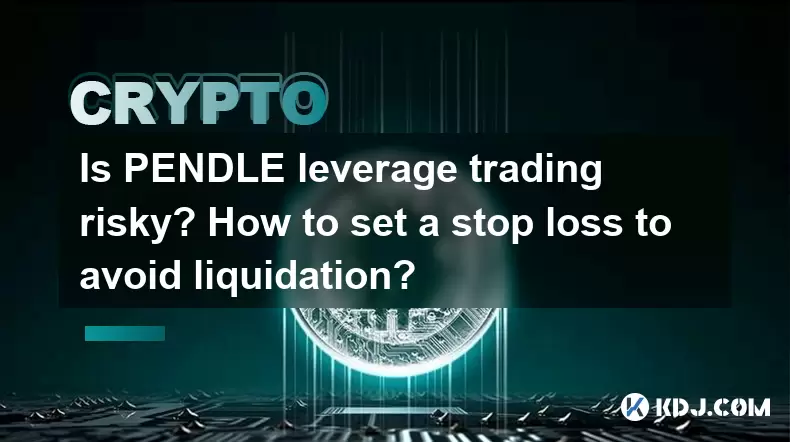-
 Bitcoin
Bitcoin $116900
0.00% -
 Ethereum
Ethereum $4280
5.48% -
 XRP
XRP $3.265
-1.45% -
 Tether USDt
Tether USDt $1.000
-0.01% -
 BNB
BNB $807.0
1.41% -
 Solana
Solana $183.1
2.93% -
 USDC
USDC $0.9999
0.00% -
 Dogecoin
Dogecoin $0.2440
6.50% -
 TRON
TRON $0.3357
-0.88% -
 Cardano
Cardano $0.8178
2.63% -
 Hyperliquid
Hyperliquid $44.13
7.45% -
 Chainlink
Chainlink $21.39
9.09% -
 Stellar
Stellar $0.4524
-0.84% -
 Sui
Sui $3.957
2.13% -
 Bitcoin Cash
Bitcoin Cash $572.7
-2.54% -
 Hedera
Hedera $0.2671
1.54% -
 Avalanche
Avalanche $24.77
4.17% -
 Ethena USDe
Ethena USDe $1.001
0.02% -
 Litecoin
Litecoin $122.3
-1.94% -
 Toncoin
Toncoin $3.432
2.26% -
 UNUS SED LEO
UNUS SED LEO $9.007
0.49% -
 Shiba Inu
Shiba Inu $0.00001396
5.26% -
 Uniswap
Uniswap $11.09
1.64% -
 Polkadot
Polkadot $4.155
4.57% -
 Dai
Dai $1.000
0.00% -
 Pepe
Pepe $0.00001253
5.11% -
 Cronos
Cronos $0.1588
2.67% -
 Bitget Token
Bitget Token $4.512
0.05% -
 Monero
Monero $275.0
0.64% -
 Ethena
Ethena $0.7527
15.10%
Is PENDLE leverage trading risky? How to set a stop loss to avoid liquidation?
Leverage trading PENDLE can be risky; setting a stop loss is crucial to avoid liquidation and manage potential losses effectively.
May 07, 2025 at 04:28 pm

Is PENDLE Leverage Trading Risky? How to Set a Stop Loss to Avoid Liquidation?
Leverage trading in cryptocurrencies, including PENDLE, can be an exhilarating yet potentially hazardous endeavor. The allure of amplified profits is undeniable, but so is the risk of significant losses. In this article, we delve into the intricacies of leverage trading with PENDLE, focusing on the inherent risks and the crucial practice of setting stop losses to mitigate the possibility of liquidation.
Understanding Leverage Trading with PENDLE
Leverage trading allows traders to borrow funds to increase their trading position beyond what their capital would normally allow. With PENDLE, a decentralized finance (DeFi) token, traders can engage in leverage trading on various platforms that support it. The key attraction is the potential to magnify returns; however, this comes with the increased risk of substantial losses.
When trading PENDLE with leverage, a trader might use a 5x leverage, meaning they can control a position worth five times their initial investment. If PENDLE's price moves favorably, the gains can be significant. However, a small adverse movement in PENDLE's price can lead to considerable losses, especially if the trader's position gets liquidated.
The Risks Associated with PENDLE Leverage Trading
The primary risk in leverage trading PENDLE is the possibility of liquidation. Liquidation occurs when the value of the collateral falls below a certain threshold, and the platform automatically closes the position to recover the borrowed funds. This can happen swiftly, leaving traders with little time to react.
Another risk is market volatility. PENDLE, like other cryptocurrencies, can experience sudden and sharp price movements. These fluctuations can lead to rapid changes in the value of a leveraged position, making it challenging to predict and manage.
Interest rates on borrowed funds also pose a risk. The longer a position is held, the more interest accrues, which can erode potential profits or exacerbate losses.
Importance of Setting a Stop Loss
A stop loss is an essential tool for managing the risks associated with leverage trading. It is an order placed with a broker to buy or sell a security when it reaches a certain price, designed to limit an investor's loss on a position. Setting a stop loss can help traders avoid the devastating impact of liquidation.
By setting a stop loss, traders can define the maximum amount they are willing to lose on a trade. If PENDLE's price hits the stop loss level, the position will be automatically closed, preventing further losses. This is particularly crucial in leverage trading, where losses can escalate quickly.
How to Set a Stop Loss on PENDLE Leverage Trading
Setting a stop loss on PENDLE leverage trading involves several steps, which can vary slightly depending on the trading platform. Here's a general guide on how to set a stop loss on a typical trading platform:
- Log into your trading platform: Ensure you are logged into your account on the platform where you are trading PENDLE.
- Navigate to your open positions: Find the section where your current trades are listed.
- Select the PENDLE position: Click on the specific PENDLE trade for which you want to set a stop loss.
- Choose the 'Stop Loss' option: Look for the option to set a stop loss. This might be labeled as 'Stop Loss,' 'SL,' or something similar.
- Enter the stop loss price: Decide on the price at which you want the stop loss to trigger. This should be a price level that you are comfortable losing up to.
- Confirm the stop loss: After entering the desired stop loss price, confirm the setting. Some platforms may require you to review and confirm the order before it becomes active.
Factors to Consider When Setting a Stop Loss
When setting a stop loss for PENDLE leverage trading, several factors need to be considered to ensure it is effective:
- Volatility of PENDLE: The higher the volatility, the wider the stop loss might need to be to avoid being triggered by normal market fluctuations.
- Position size: Larger positions may require a more conservative stop loss to manage risk effectively.
- Market conditions: During times of high market uncertainty, a tighter stop loss might be necessary to protect against sudden adverse movements.
- Personal risk tolerance: Each trader has a different level of risk tolerance, which should influence the placement of the stop loss.
Monitoring and Adjusting Stop Losses
Setting a stop loss is not a one-time action; it requires ongoing monitoring and potential adjustments. As PENDLE's price moves and market conditions change, traders may need to adjust their stop losses to either lock in profits or reduce potential losses.
- Regularly review your stop loss levels: Check your stop loss settings frequently to ensure they still align with your trading strategy and current market conditions.
- Adjust stop loss to break even: As PENDLE's price moves in your favor, consider moving the stop loss to the entry price to ensure you do not lose money on the trade.
- Trailing stop loss: Some platforms offer a trailing stop loss feature, which automatically adjusts the stop loss level as the price of PENDLE moves in your favor, helping to lock in profits while still protecting against downturns.
Frequently Asked Questions
Q: Can I use a stop loss to completely eliminate the risk of liquidation?
A: While a stop loss can significantly reduce the risk of liquidation, it cannot eliminate it entirely. There can be instances of slippage or extreme market volatility where the stop loss order is executed at a worse price than intended, potentially leading to liquidation.
Q: What is the best leverage ratio to use when trading PENDLE?
A: There is no one-size-fits-all answer to this question. The best leverage ratio depends on your risk tolerance, trading strategy, and market conditions. Generally, lower leverage ratios (e.g., 2x to 5x) are less risky than higher ones (e.g., 10x to 50x).
Q: How often should I adjust my stop loss on PENDLE trades?
A: The frequency of adjusting your stop loss depends on your trading strategy and the volatility of PENDLE. As a general rule, it's good practice to review and potentially adjust your stop loss daily, especially in highly volatile markets.
Q: Are there any fees associated with setting a stop loss on PENDLE trades?
A: Fees can vary depending on the trading platform. Some platforms may charge a fee for placing a stop loss order, while others might include it in their general trading fees. Always check the fee structure of your chosen platform.
Disclaimer:info@kdj.com
The information provided is not trading advice. kdj.com does not assume any responsibility for any investments made based on the information provided in this article. Cryptocurrencies are highly volatile and it is highly recommended that you invest with caution after thorough research!
If you believe that the content used on this website infringes your copyright, please contact us immediately (info@kdj.com) and we will delete it promptly.
- Shiba Inu, Pepe, and Remittix: A Tale of Memes, Hype, and Real-World Utility
- 2025-08-10 08:30:12
- Ethereum Price, ETH Tokens, Rally Prediction: Is a New All-Time High In Sight?
- 2025-08-10 08:30:12
- XRP, Elon Musk, and Wealth: A Crypto Conundrum
- 2025-08-10 08:50:12
- Retire Early with Crypto: High-Conviction Plays Beyond Bitcoin
- 2025-08-10 08:50:12
- BlockDAG, Render, and Polkadot: Charting the Course for Long-Term Crypto Dominance
- 2025-08-10 08:55:21
- Toncoin's Ascent: Price Predictions and the VERB Strategy Impact
- 2025-08-10 08:55:21
Related knowledge

How to purchase Aragon (ANT)?
Aug 09,2025 at 11:56pm
Understanding Aragon (ANT) and Its PurposeAragon (ANT) is a decentralized governance token that powers the Aragon Network, a platform built on the Eth...

Where can I buy UMA (UMA)?
Aug 07,2025 at 06:42pm
Understanding UMA and Its Role in Decentralized FinanceUMA (Universal Market Access) is an Ethereum-based decentralized finance (DeFi) protocol design...

How to buy Storj (STORJ) tokens?
Aug 09,2025 at 07:28am
Understanding Storj (STORJ) and Its Role in Decentralized StorageStorj is a decentralized cloud storage platform that leverages blockchain technology ...

What is the best app to buy Nano (NANO)?
Aug 09,2025 at 03:35am
Understanding Nano (NANO) and Its Unique FeaturesNano is a feeless, instant cryptocurrency designed for fast peer-to-peer transactions. Unlike many ot...

Where can I purchase Siacoin (SC)?
Aug 08,2025 at 11:14am
Understanding Siacoin (SC) and Its Role in the Sia NetworkSiacoin (SC) is the native cryptocurrency of the Sia decentralized cloud storage platform, a...

How to sell my Ontology (ONT) tokens?
Aug 09,2025 at 06:08pm
Understanding Ontology (ONT) and Its Trading EcosystemBefore selling your Ontology (ONT) tokens, it's essential to understand the nature of the crypto...

How to purchase Aragon (ANT)?
Aug 09,2025 at 11:56pm
Understanding Aragon (ANT) and Its PurposeAragon (ANT) is a decentralized governance token that powers the Aragon Network, a platform built on the Eth...

Where can I buy UMA (UMA)?
Aug 07,2025 at 06:42pm
Understanding UMA and Its Role in Decentralized FinanceUMA (Universal Market Access) is an Ethereum-based decentralized finance (DeFi) protocol design...

How to buy Storj (STORJ) tokens?
Aug 09,2025 at 07:28am
Understanding Storj (STORJ) and Its Role in Decentralized StorageStorj is a decentralized cloud storage platform that leverages blockchain technology ...

What is the best app to buy Nano (NANO)?
Aug 09,2025 at 03:35am
Understanding Nano (NANO) and Its Unique FeaturesNano is a feeless, instant cryptocurrency designed for fast peer-to-peer transactions. Unlike many ot...

Where can I purchase Siacoin (SC)?
Aug 08,2025 at 11:14am
Understanding Siacoin (SC) and Its Role in the Sia NetworkSiacoin (SC) is the native cryptocurrency of the Sia decentralized cloud storage platform, a...

How to sell my Ontology (ONT) tokens?
Aug 09,2025 at 06:08pm
Understanding Ontology (ONT) and Its Trading EcosystemBefore selling your Ontology (ONT) tokens, it's essential to understand the nature of the crypto...
See all articles

























































































